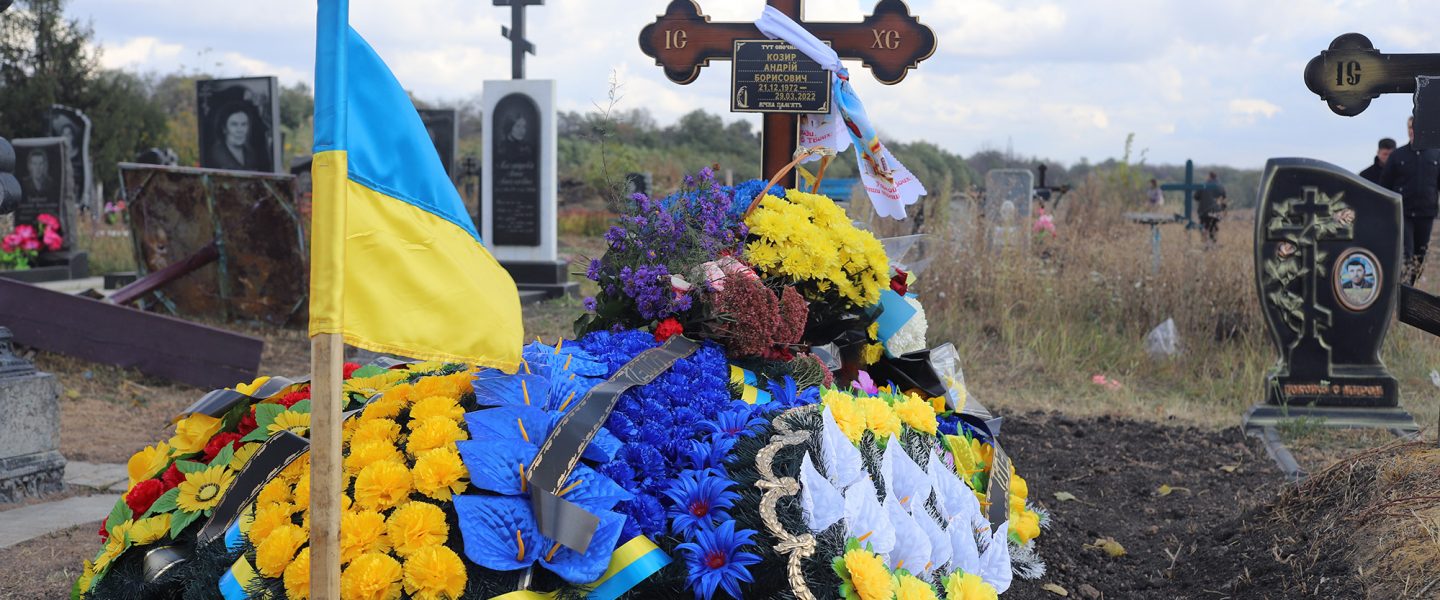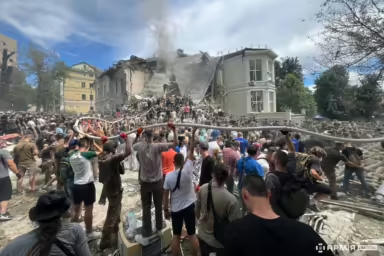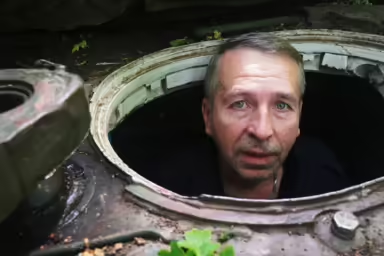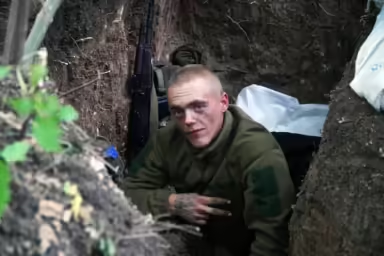On Ukraine’s embattled eastern front, Russians pay good money for information on where to strike next.
|
Listen To This Story
|
“This is one of the worst war crimes I have ever seen. The dead here are women, children, whole families,” said Eduard Mirgorodsky.
One of the chief war crimes prosecutors in Kharkiv, Migorodsky has seen a lot in his career, but surveying the shattered ruins of a café and grocery store that had just been struck by a Russian Iskander missile in the village of Hroza added to his fury. His eyes creased with rage, Mirgorodsky told me that word had been circulating that the target information for this attack might have been passed to the Russians by Ukrainian traitors. The missile killed 55 people, nearly half the village’s remaining population. Ironically, the villagers had gathered to attend a funeral and bury a Ukrainian soldier killed in recent fighting.
The casualties were bad enough, but the suggestion that Ukrainians might have contributed to the slaughter of their fellow countrymen for money or because of ideological differences was even harder to deal with. In eastern Ukraine, which was under Moscow’s domination for years, loyalties can often be divided and money can be a deciding factor.
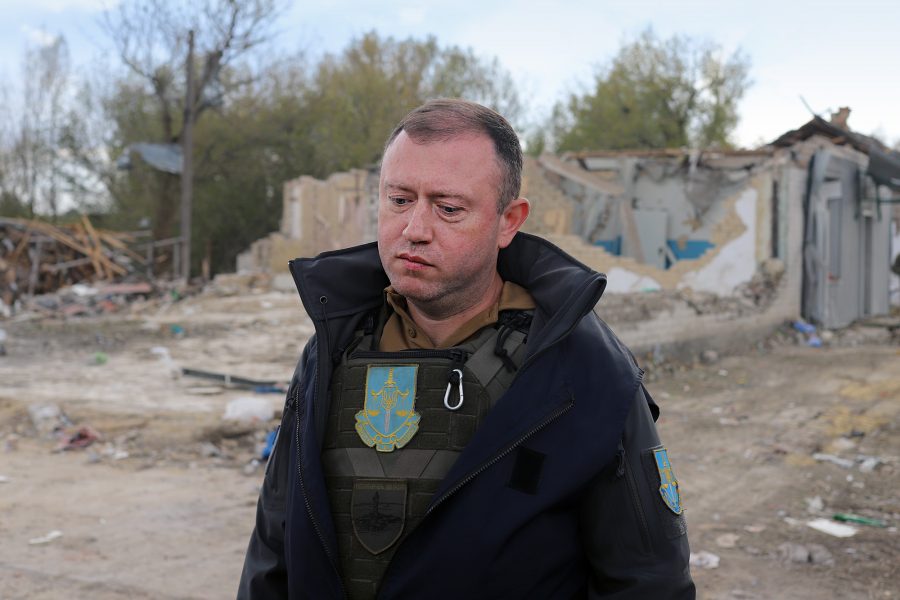
Mirgorodsky’s team was following through on investigations in the area. A week later, the SBU, Ukraine’s intelligence service, confirmed that they had been investigating two brothers suspected of slipping intelligence information to the Russians. I met Mirgorodsky a year earlier when a mass grave had been discovered containing the bodies of hundreds of Ukrainian soldiers and civilians. This was an equally shocking experience. There was no question about where his loyalties lay.
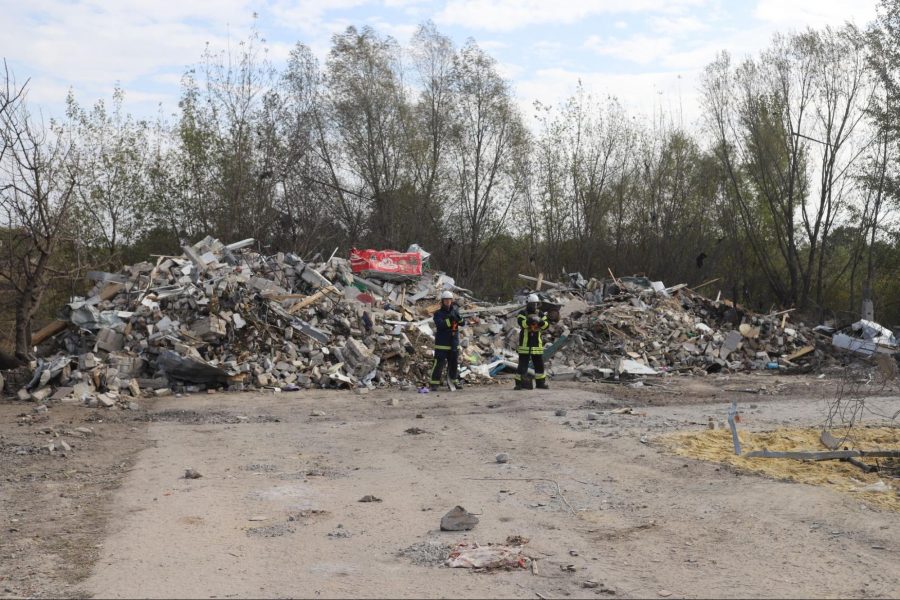
On an earlier trip into a conflict-ridden oblast in eastern Ukraine about 12 miles from Bakhmut, near the epicenter of the fighting in the Donetsk region, our mobile phones buzzed with a text message from a blocked number. “We exchange information with the Ukrainian Armed Forces,” it said. There was a link to a Telegram account where anyone could submit videos or photos of sensitive equipment. The text was an invitation to lunch with two local women whom Matthew, a soldier from Ukraine’s Third Rapid Assault Brigade, had known for some time.
“These women are among the only civilians that we trust here,” he said. “Most of the rest would sell us out to the Russians. We call them the ‘zhduniy,’ the ‘waiters’ — they are waiting for the Russians to take over. They think the Russians will bring back the Soviet Union. The Russians offer them money, and they are willing to take it.”
Russians pay several hundred dollars to any Ukrainian who is willing to provide the coordinates for a Ukrainian position that is likely to have important equipment attached to it. The money is a fortune in eastern Ukraine’s war-torn economy.
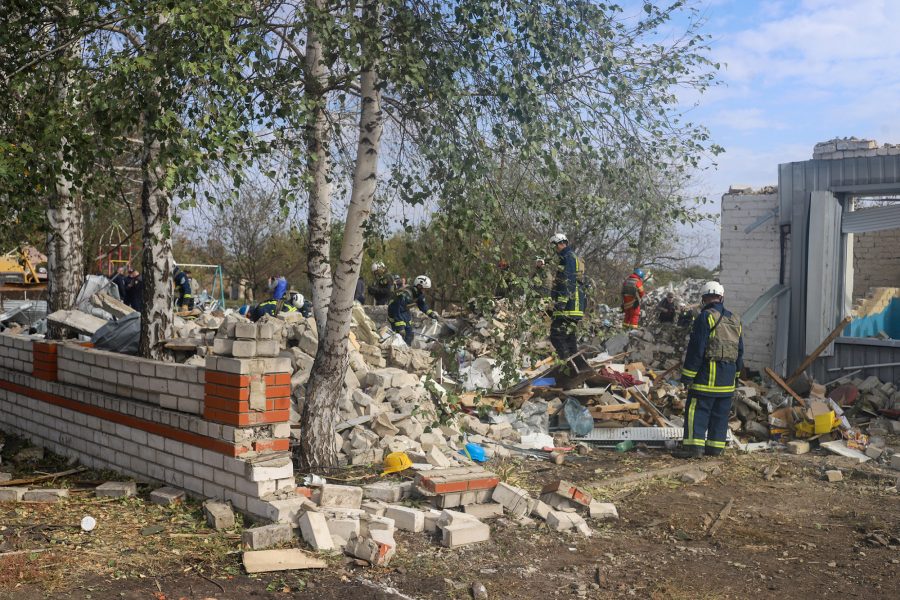
Matthew says it is not unusual to have villagers pump him for information. “They try to find out where you are staying,” he said. “They want to know what your unit is doing. Then they call their friends or relatives in Russia and they pass it on to the Russian soldiers.” Matthew remembers a villager peering through the window of a house with Ukrainian soldiers inside. He was filming what they were doing. “I nearly shot him,” Matthew said.
I had experienced a similar incident myself a few months earlier in the town of Soledar in the Donbas region. I was reporting on the Russian offensive. Civilians were being evacuated from an apartment building when several men pulled into the courtyard on mopeds. They started taking photos on their smartphones. A few minutes later, we were shelled with rockets containing deadly white phosphorus, which sticks to your skin as it burns. We were able to escape. Others were not so lucky.
Of course, Ukraine has its own spies. A senior Ukrainian defense official told me about a taxi driver who would drive around a Russian-occupied town recording Russian positions with his dashcam. He would then send the video to friends in the military and they would fire back with artillery.
When Ukraine recaptured the town of Kherson, many of the precision strikes against Russian positions and ammunition dumps were done with the help of local spotters. Similar spotters are employed throughout the occupied territories. It is a topic that the government in Kyiv doesn’t like to talk about.
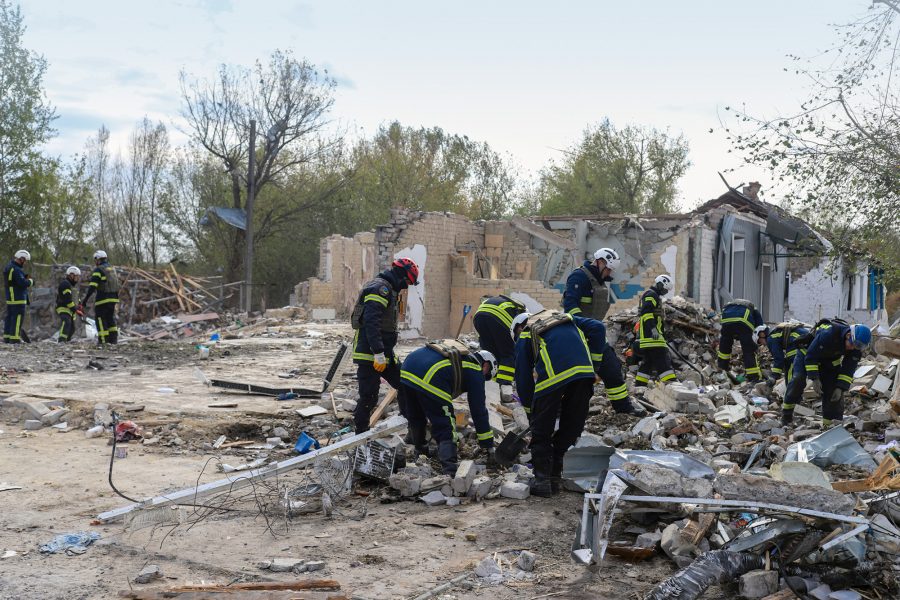
Local spying can also end in tragedy. In June, a Russian rocket struck a popular pizza restaurant in Kramatorsk, killing 10 adults and three children. The restaurant was well known and had been a popular hangout for foreign journalists, aid workers, and soldiers. The SBU said that a local Ukrainian collaborator had secretly made a video recording of the restaurant and local cars that were parked nearby and then sent the video to Russian intelligence. An employee of the local electrical company was arrested the next day and admitted to having supplied the Russians with necessary intelligence.
In Ukraine, espionage seems to be split evenly between men and women. Mostly these ad hoc agents are between 30 and 50 years old. A middle-aged woman who had been employed as a taxi driver admitted to supplying the Russians with information. She says, in a video recorded by The New York Times, that she thought that helping the Russians would bring peace. “I thought maybe something would change for the better in my country this way,” she says on the Times video. “I didn’t want my children to live in a war.”
Why help the Russians after they have committed so many atrocities? One answer is that even before the Russian invasion, eastern Ukraine had little hope for the future. “If you look around our city,” said Anna Demidova, 28, a Ukrainian refugee who now lives in Germany, “maybe one new restaurant has opened up since Soviet times. After the end of the Soviet Union, our cities in this region were neglected. People felt abandoned. That made them susceptible to propaganda on Russian TV and radio.”
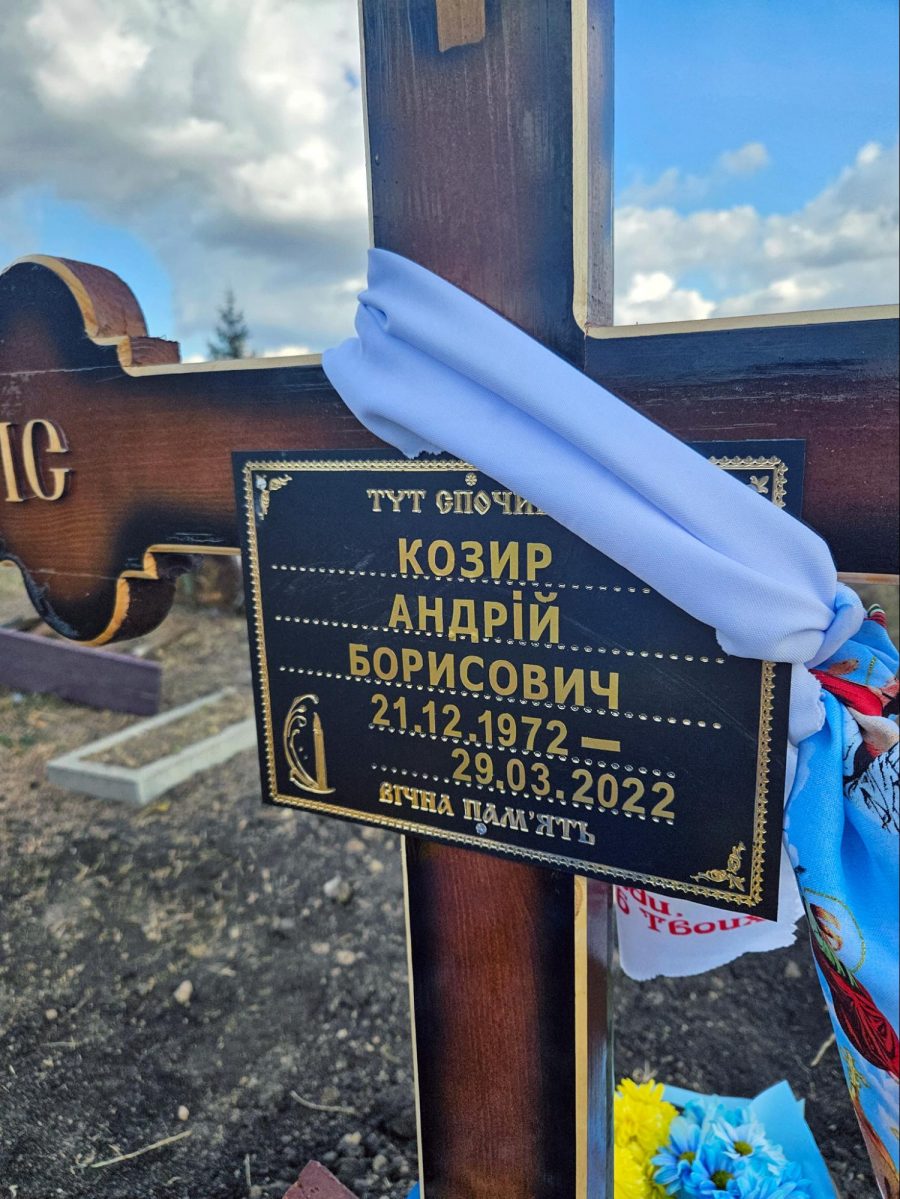
According to Demidova, the Donetsk region has always had close ties with Russia, which is just across the border. More people speak Russian than Ukrainian, and most of the businesses depend on cross-border trade with Russia. The region’s population voted overwhelmingly in a 1991 referendum for Ukraine’s independence, but the economy declined steadily after that, and some people believed that the breakup of the Soviet Union had been a tragic mistake.
While much of the youth vote supports Ukraine and leans toward integration with the European Union, some older Ukrainians, particularly in eastern Ukraine, still feel nostalgia for the Soviet period, when Russia resembled an expansive empire. “I would always hear the older generation saying how things were better in Soviet times, that life was stable, people had better values, and we got everything for free,” Demidova says.
When war broke out in 2014, there was an audience in Ukraine that was susceptible to the Kremlin’s wildest misinformation. Russian propaganda blanketed the population with messaging saying that Ukraine was controlled by bandits or Nazis and that Russian speakers were going to be killed. As if to confirm that, a Russian heavy metal radio station, Novorossiya Rock, was banned in Ukraine, partly because it recalled the imperial Russian contention that eastern and southern Ukraine are part of one nation, New Russia.
Ukrainian officials are still trying to figure out what to do with Ukrainians who collaborated with the Russians during the occupation. Kupiansk, in the Kharkiv region, fell to the Russians in the early days of the war. It was liberated in last year’s counteroffensive. Even though Ukraine claims it, the town is so close to the Russian border that it has a reputation for being a pro-Russian town that has a significant number of collaborators. The Russians have begun attacking the town again, and Ukrainians worry that some of the townspeople may be willing and ready to help them take it back.
Serhei, Kupiansk’s police chief, maintains that it’s unfair to assume that the town is pro-Russian. He insists that 90 percent of the town is for Ukraine and that only 10 percent support Russia. Other reports — notably one that was published in The Kyiv Independent — indicate that as much as 50 percent of the town may support Russia. The truth is that nobody knows for sure.
Even Serhei admits that a significant portion of his police force was ready to work with the Russians. During the Russian occupation, Kupiansk’s police station earned an unenviable reputation for torturing anyone who expressed support for Ukraine.
“Under the occupation,” he said,” both collaborators and police officers stayed on the job, working with the Russian police. They betrayed their homeland and after the occupation ended, 80 to 90 percent left for Russia. If any of them remain, we will act according to the law.”
